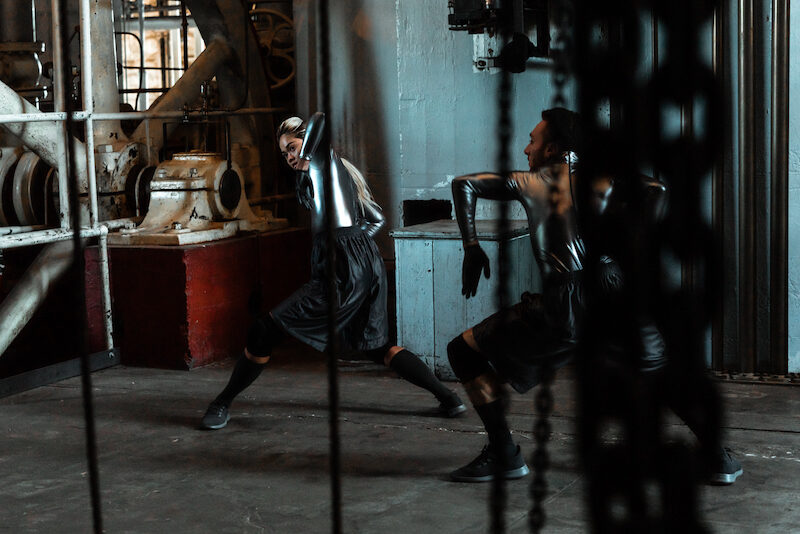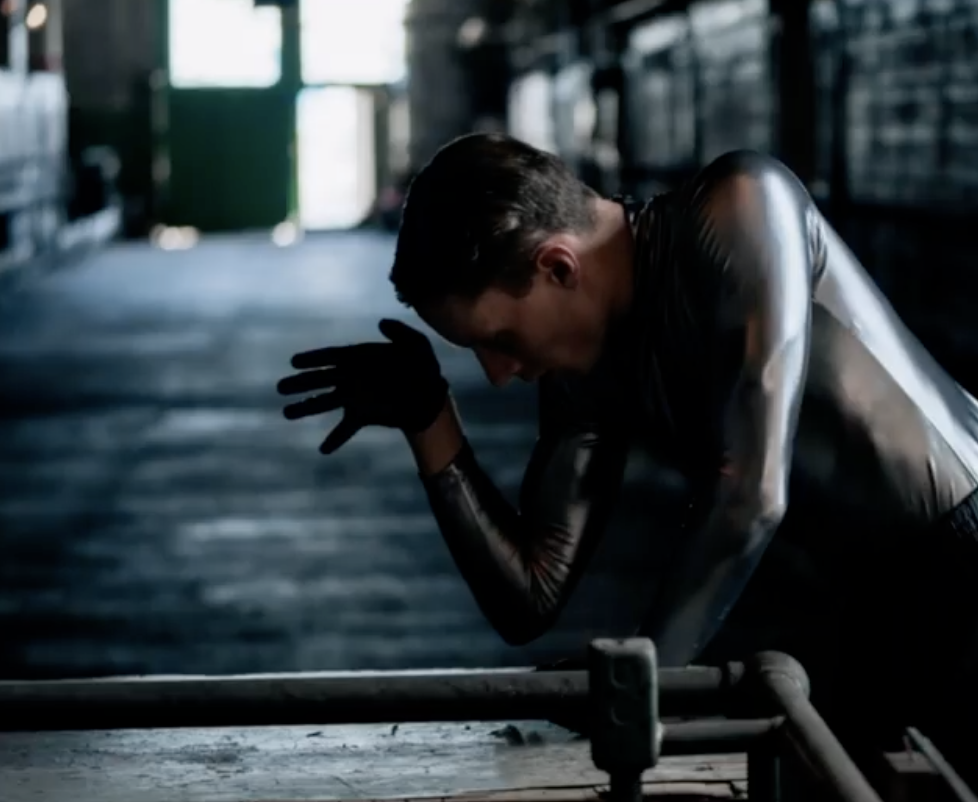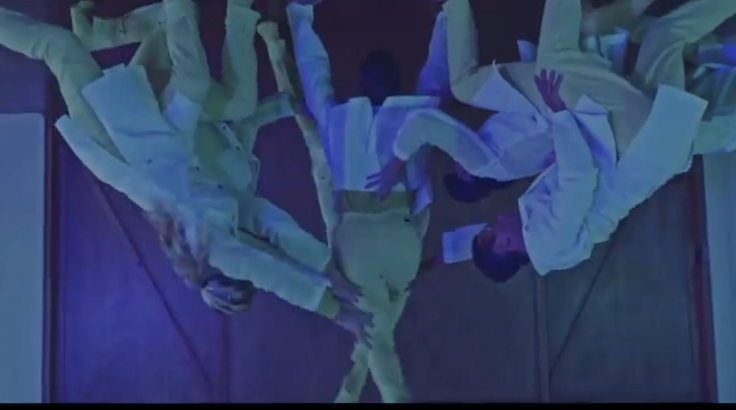Fall 21: Whim W’Him’s Unique Explorations of Liminality
Review of Fall 21 by Whim W'Him
Written by Teen Editor Triona Suiter and edited by Teen Editor Valentine Wulf

As we move into the shorter days, Whim W’Him opens their season with their annual Fall Showcase, this year featuring “Nova” by Alice Klock and Florian Lochner, “Underlove” by Mark Castera, and “E=16-0163-TSX” by Rena Butler. Presented as both live performances and as films on Whim W’Him’s streaming platform IN-With-WHIM, these three dances traverse the lands of unreality in ways that manage to hit startlingly close to true.
(The following is a review of the films only, not the live performances.)
Nova
“Nova” originally premiered in May of 2021 for WONDER BEYOND, a collaboration between Whim W’Him and FLOCK. The dance is a beautiful tribute to the evolution of community over time, jumping between large groups and duets, between light and dark, between eerie beatless swells and a simple piano pulse. As the room grows brighter, the music grows heavier; when the studio melts back into shadow, the music picks up its pace.
The dancers find themselves intertwined. They guide each others’ motions, they hold each other up, they climb and roll over each others’ bodies. There are brief moments when the larger ensemble dances in unison with no physical contact, but they inevitably return to the ebb and flow of mutual support. Each dancer revolves around the others in the space.
As the performance comes to a close, the dancers settle back into the same chevron formation they stood in at the beginning, every piece of the story coming full circle. Yet they are not back where they started. They have moved through space and through time. They have built up a community. They are stronger for it.
There is a feeling of fulfilment at the end of “Nova”. The dancers are united, and they need nothing more than that.

Underlove
Where “Nova” is together, “Underlove” is alone. The dance begins in an industrial warehouse, shot in a way that highlights how small the people are in the large, open space. The dancers move as though they are workers, or even part of the machine themselves. Their clothes are silver and grey; their eyes are marked at the corners with silver dots reminiscent of tears. Yet try as they might to become one with the machine, the people are something organic in an inorganic space and they do not belong.
The dance progresses and, for reasons unknown, the dancers begin to run. They meet in a pipe-lined hall with no windows, illuminated only by a deep blue light. The beat gradually falls out of sync, growing larger as the music morphs into sudden, unnatural lurches of sound. The image begins to flash between the dancers in the hallway and dark figures standing ritualistically around a table, and an echoing voice rises above it all.
The voice speaks of memory, of things taken for granted, of being lost. “Don’t lose me, don’t leave me, I leave, I’m left alone.” It is clear from the tone that they are sharing a warning with the audience, but the voice grows deeper and more modulated until it becomes impossible to understand. The dancers retreat into the dark. The scene shifts suddenly back to the factory floor.
Two people move together in a room once again lit by dusty windows. The ominous beats transition back into a swell of music as they dance, entangled. Now shot closer and from a lower angle, the dancers appear to fill the space in ways they hadn’t before. The final section feels like a return, and the dance concludes with a strange, slowly desperate embrace.
There is fear in “Underlove”: fear of being ripped apart from one another, fear of losing possession and control, fear of being alone. All the fears the world has had to grapple with more than ever over the past two years. "Underlove" forces the viewer to confront these fears. The ensuing discomfort is an important reminder to never take what one has for granted.

E=16-0163-TSX
Beginning in a room full of fog, with people in safety goggles and lab coats writing on whiteboards and talking over each other, “E=16-0163-TSX” comes across as a vivid hallucination of the process of theoretical discovery.
The exposure, angles, and sound are all constantly in flux, reminiscent of a fever dream. The image shifts through a wide range of filters and saturations, from radioactive neon to wiggly laser outlines to haunting grayscale. The camera zooms in and out, falling off-kilter. Individuals move collectively as part of a wider entity as a cacophony of instruments and animal noises takes over the space. No one part of this dance is like another, yet the consistence of this absurdity is in fact what makes it cohesive.
The dance concludes with another billow of thick fog. The viewer is left with a feeling that there is something much larger at play, that what they have just seen is only a tiny piece of everything going on below the surface.
All three films incorporate a level of special effects that would be impossible to replicate live, but this is especially noticeable in “E=16-0163-TSX”. When so much of the dance’s energy comes from the cinematography, the viewer is forced to wonder how it can translate to a live performance. What aspects are unable to be maintained? How much can be changed before it can no longer be considered the same dance?
Regardless of the answers to these questions, the films each tell their own unique story of movement through a liminal space. “Nova” leads viewers through time, “Underlove” through the abandoned, and “E=16-0163-TSX” through a dream. The global community is approaching the two-year mark on its own journey through the collective liminal existence that has resulted from the pandemic, and these dances come now at quite possibly the most resonating time they ever will.
Fall 21 played September of 2021. For more information see here.
Lead photo credit: Whim W'Him dancers in "Underlove". Photo by Stefano Altamura.
The TeenTix Newsroom is a group of teen writers led by the Teen Editorial Staff. For each review, Newsroom writers work individually with a teen editor to polish their writing for publication. The Teen Editorial Staff is made up of 6 teens who curate the review portion of the TeenTix blog. More information about the Teen Editorial Staff can be found HERE.
The TeenTix Press Corps promotes critical thinking, communication, and information literacy through criticism and journalism practice for teens. For more information about the Press Corps program see HERE.


